

Graycliff
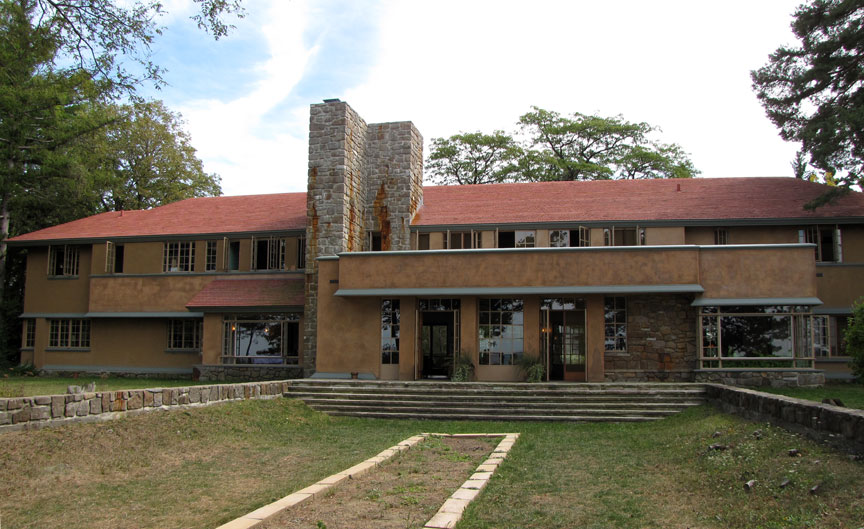
The largest building, the Isabelle R. Martin House, Graycliff
The Graycliff estate was designed by Frank Lloyd Wright (1867–1959) and was built between 1926 and 1931. It is located about 20 minutes south of downtown Buffalo, New York, at 6472 Old Lake Shore Road in Derby, New York. Sometimes called "The Jewel on the Lake", Graycliff is sited on a bluff overlooking Lake Erie with sweeping views of downtown Buffalo and the Canadian shore.

Graycliff is one of the most ambitious and extensive summer estates Wright ever designed.
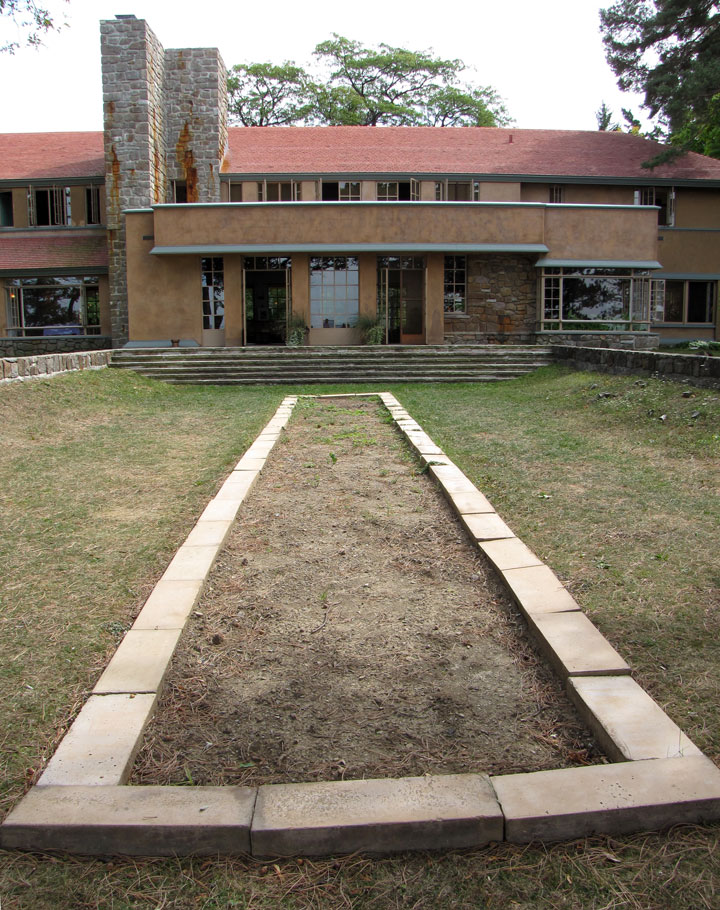
The Graycliff estate was the summer home of Isabelle R. Martin (1869–1945) and
her husband, Buffalo entrepreneur Darwin D. Martin (1865–1935). Graycliff was
the second of two complexes Frank Lloyd Wright designed for the couple, the
first being the Martin House Complex, their city residence. By the time of Graycliff’s commission, Wright and the Martins had been personal friends as well
as clients for over twenty years. Between the time of the completion of the
Martin House Complex and the construction of Graycliff grew a great long-term
friendship, to the extent that the Martins provided financial assistance and
other support to Wright as his career unfolded.

In the early years of their long relationship, Darwin Martin was actively
involved with the selection of Frank Lloyd Wright as the architect for the
Larkin Administration Building, Wright's first major commercial project. Martin
was an executive with the Larkin Company, and Wright also designed houses in
Buffalo for fellow Larkin Company executives William R. Heath and Walter V.
Davidson.
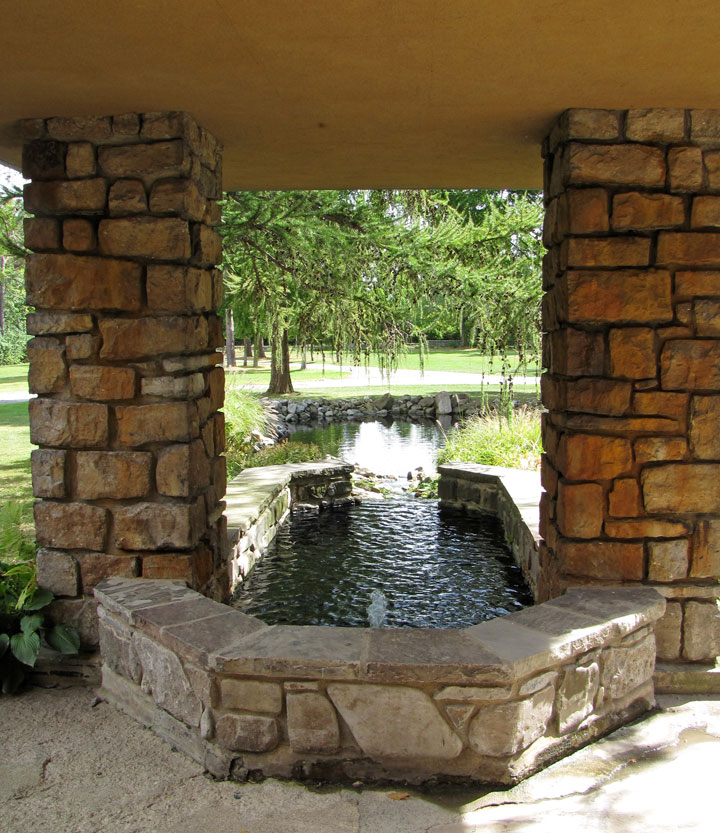
Isabelle R. Martin was the client of record for Graycliff, and it was designed
by Wright for her pleasure.
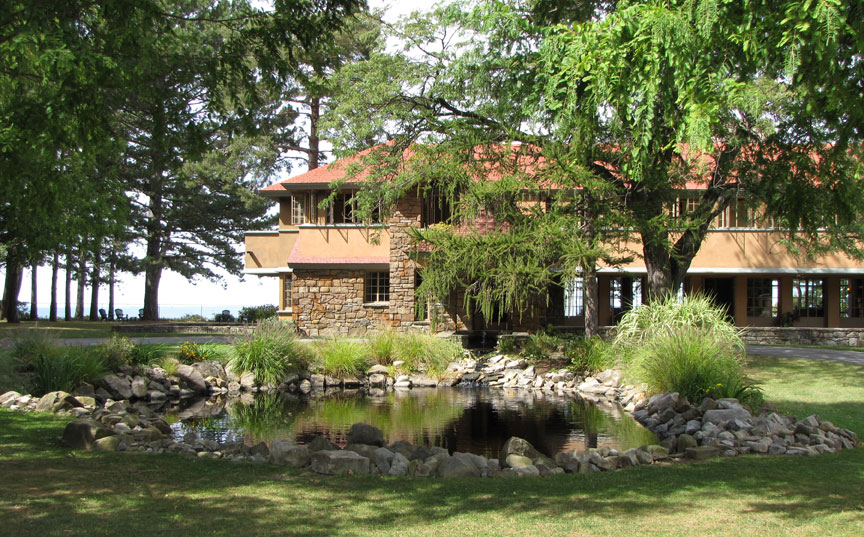
Graycliff is one of only five of Frank Lloyd Wright’s designs that were built
between 1925 and 1935, and the only Wright designed structure built between
Taliesin (1914) and Fallingwater (1936) using stone. Wright believed stone to be
the only true building material and may be why he insisted the Martins
incorporate it at Graycliff. Graycliff is considered to be one of Wright's most
important mid-career works in his Organic Style.
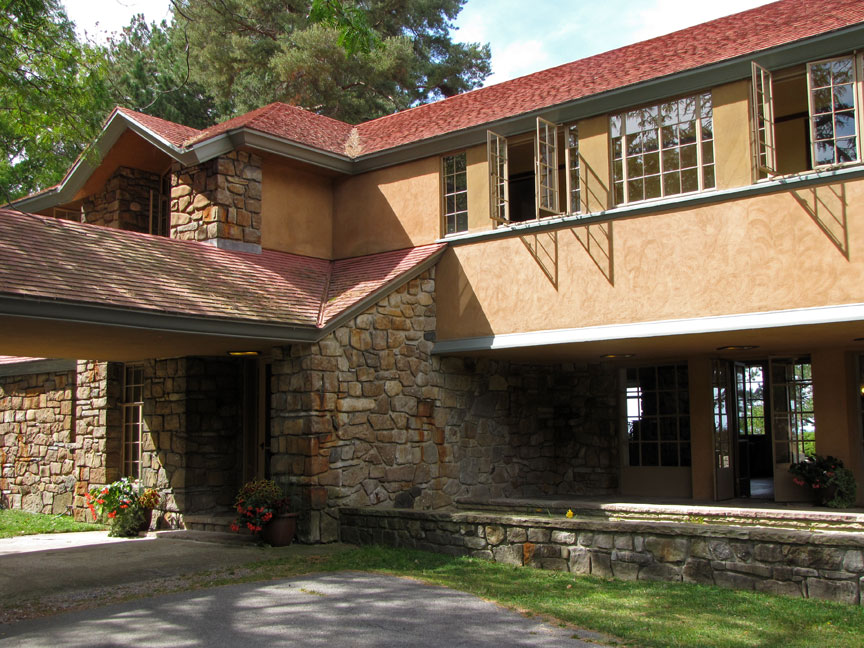
Graycliff is a complex of three buildings integrated within an 8.4-acre (34,000
m2) landscape. It is sited high on a bluff with views of Lake Erie across to
Ontario. The buildings, in Wright’s Organic Architecture style, are set amidst
extensive grounds and gardens also designed by Wright.

It
features spacious cantilevered balconies, expansive terraces, and “ribbons” of
windows that allow the experience of nature from within and through the house.
On especially clear days the spray of Niagara Falls is visible through the
framed opening created by the cantilevered upper bridge and the stone veneered
massing at each end of the home. The lower section with its glass walls becomes
a transparent pavilion-like center, allowing visitors to actually see through
the building itself to the lake beyond.
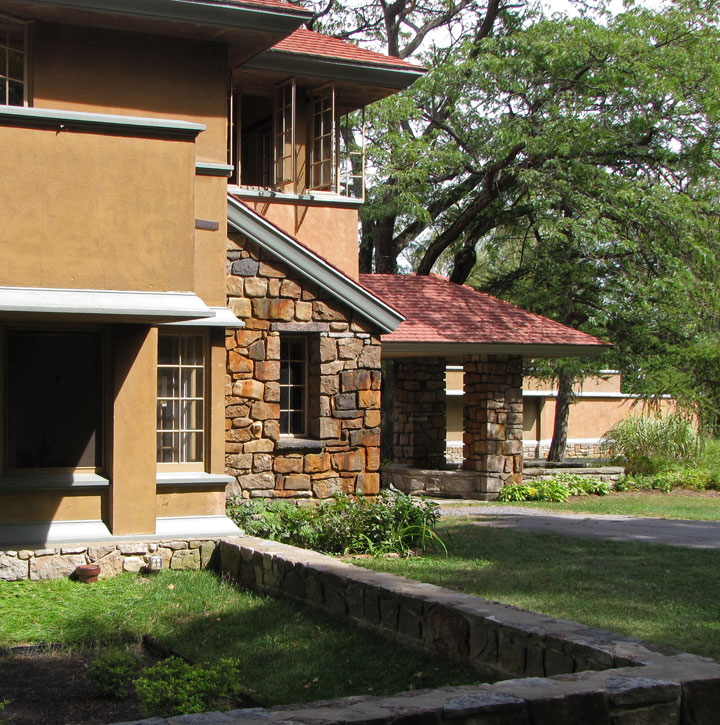
The Foster House was originally designed as a garage with an apartment above for
the chauffeur and his family. In 1929 the Martins owned a Pierce-Arrow touring
car as well as a Detroit Electric car. After their first summer in residence,
the Martins asked Wright to alter and expand the building. Once complete, the
Martin’s daughter Dorothy, together with her husband James Foster and their
children Margaret and Darwin Martin Foster, spent many happy summers in
residence. Like the Martin House, the Foster House has strong horizontal lines
echoing the lake beyond, cantilevered balconies, and numerous windows.
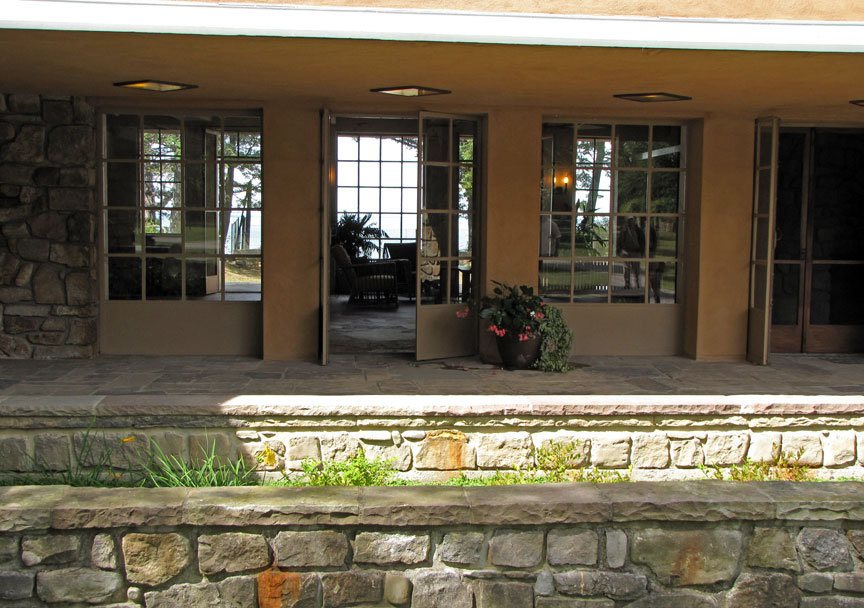
View of the interior through the Eastern windows

view through the door
The smallest building of the complex is known as the Heat Hut. Like the other two buildings, it is constructed of stone found at the lake’s edge, ochre stucco, and a red cedar shingle roof.
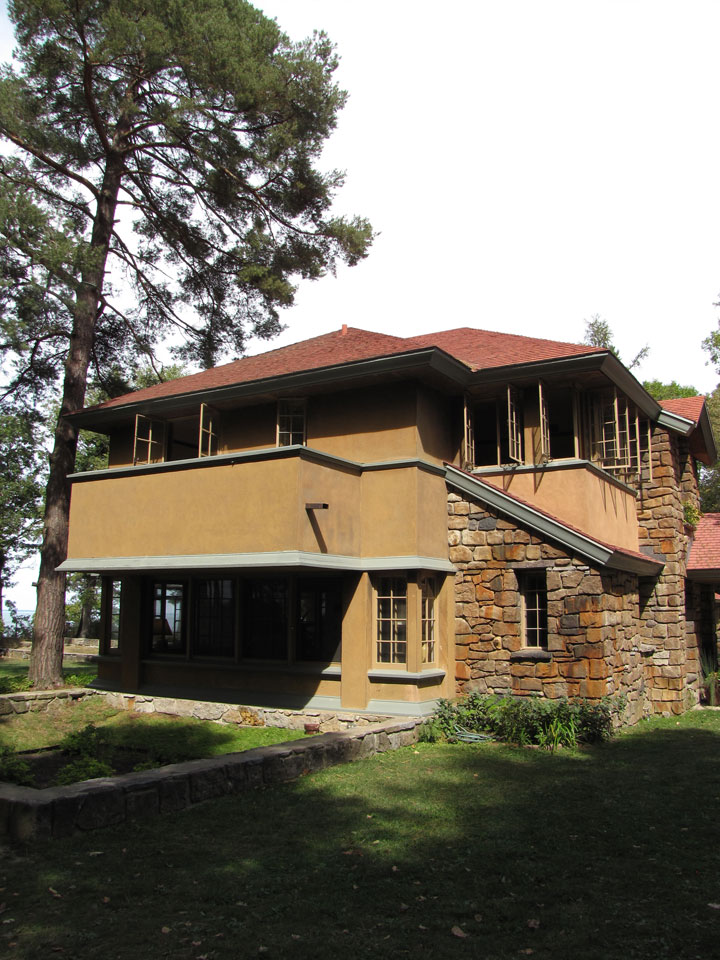
Garden walls, composed of the same stone and stucco as the Foster and Martin
Houses, enhance the horizontal planes of the architecture. The gardens and
grounds feature water elements designed by Wright, including a porte cochere
that extends from Martin House, cantilevering beyond its stone pier supports
over a stone basin from which water flows into a large irregularly shaped pool.
This was intended to create an illusion of the lake flowing through the house.
On the west side, a broad esplanade connects the terrace to the cliff and lake.
The esplanade was designed to carry water, pumped from Lake Erie, down its
length and over the bluffs, completing the illusion of water flowing through.
Deemed financially extravagant this feature was halted after only the esplanade
itself was completed. Other architectural features of the landscape include a
sunken garden, a hidden garden, and stone walls in a “waterfall” pattern. Not
surprisingly, it was Darwin Martin who first introduced Wright to Niagara Falls,
less than forty miles to the north.
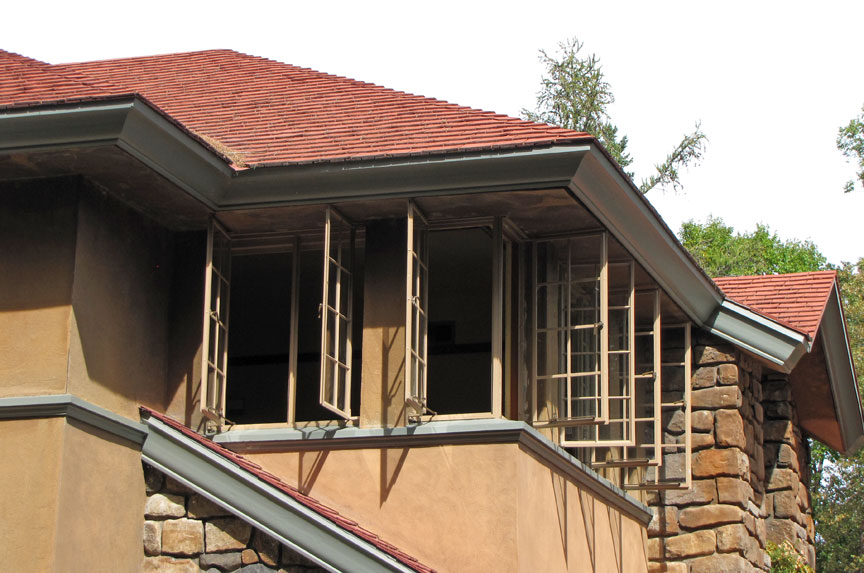
The extensive 8.4 acres (34,000 m2) of grounds and gardens were also designed by
Frank Lloyd Wright, with one of the few, if not only, landscape designs in his
own hand. These include a tennis court designed by Wright, as well as trees and
shrubs designed to complement the architecture. Additional significant
design-work was done by Ellen Biddle Shipman, one of the early and renowned
women landscape architects, and one of the creators of the Arts & Crafts and
American Craftsman style landscape design, supplemented those of Wright with
colorful flowers and a picking garden.
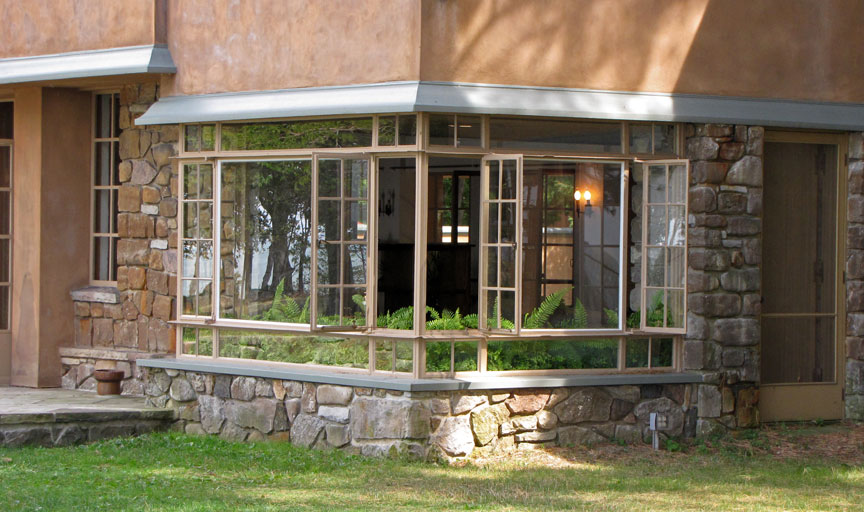
Although the family lost much of its fortune due to the Great Depression and was
forced to abandon the city house in 1937, they kept Graycliff, and returned
annually until 1943.
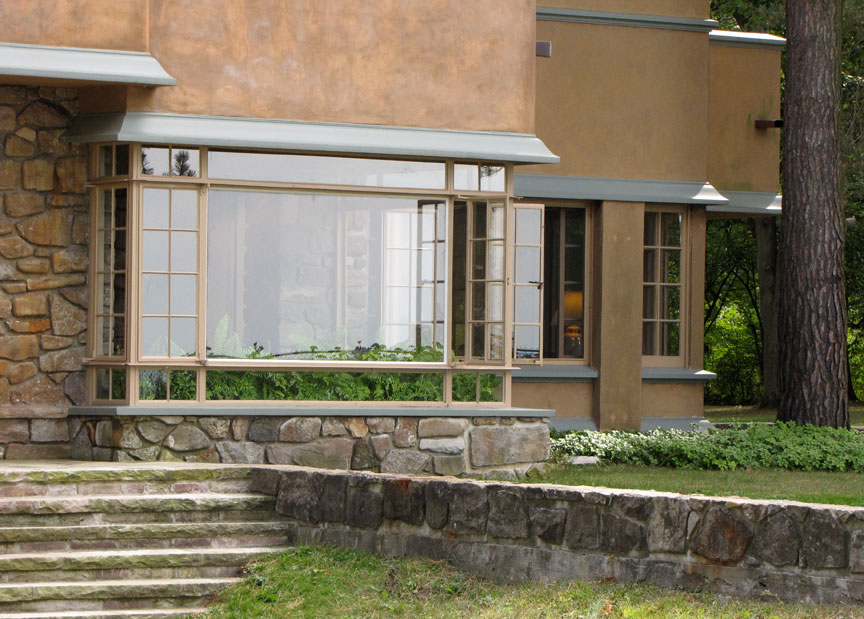
The property was purchased from the Martin family by the Piarists, a Roman
Catholic teaching order, in 1951. The Piarist Fathers, from Hungary, established
a boarding school on the grounds, as well as Calasanctius, a private high school
for gifted children in Buffalo, named after the order's founder. Although they
added two structures to Wright’s original design, all Wright-designed buildings
were left intact. Eventually enrollment dwindled and the schools closed; the
number of priests in residence also declined dramatically. Finally in late 1997,
the Piarists decided they could no longer afford to maintain the property, and
put it up for sale.
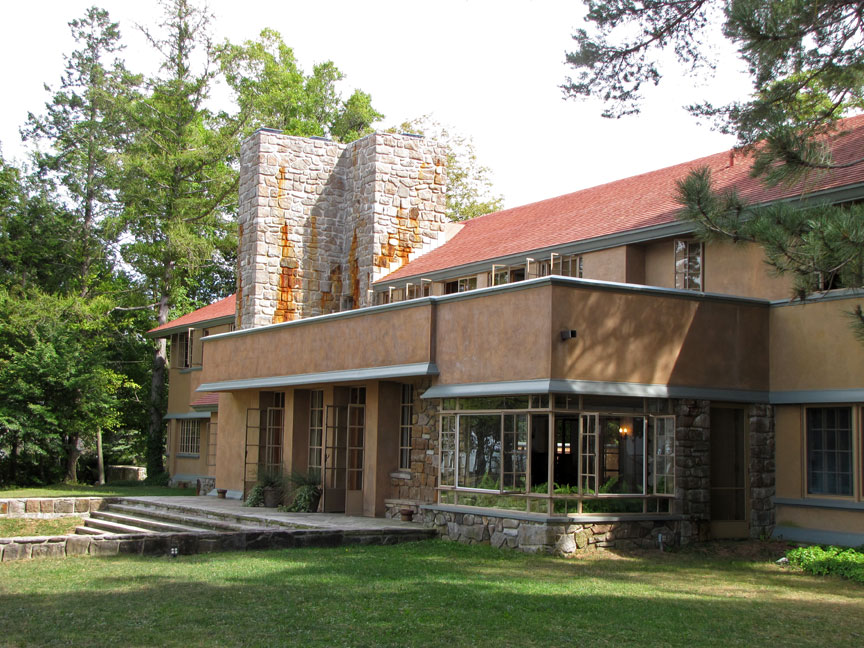
Soon after, a grassroots group of individuals purchased the property, which was
threatened with destruction due to its prime lakeside location and
attractiveness to private developers. The group formed the non-profit Graycliff
Conservancy in order to buy the property, restore it to its original condition,
and open it to the public. This effort, aided by volunteers from throughout the
community, has undertaken extensive restoration, both to remove the non-Wright
additions and to restore the now eighty year old buildings, and has created a
schedule of public tours.
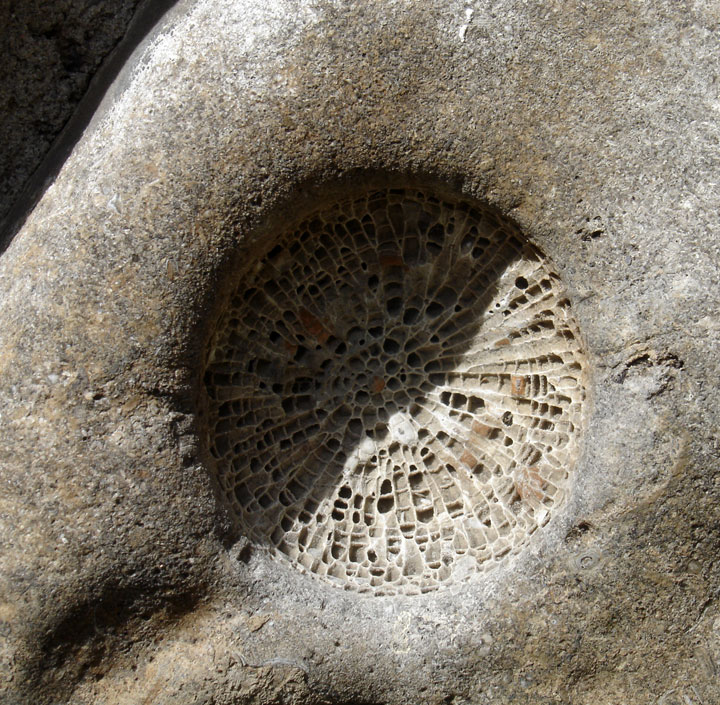
fossils in the building stone
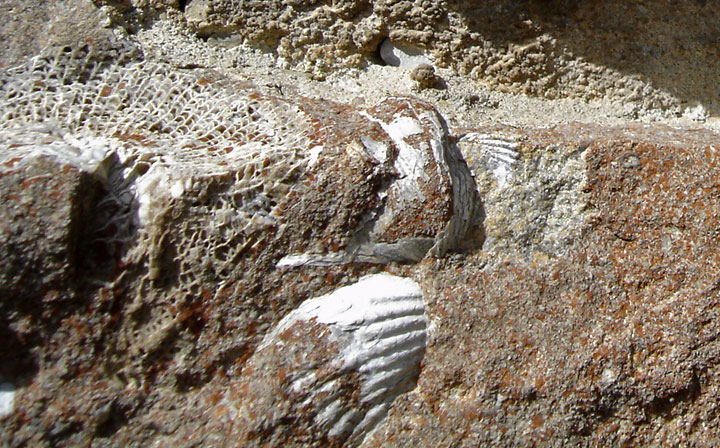
The Graycliff Conservancy is the recipient of a Save America’s Treasures grant
from the US Department of the Interior, and has received many awards for its
work. Graycliff is now a New York State Landmark and is listed on the National
Register of Historic Places.
Text from Wikipedia
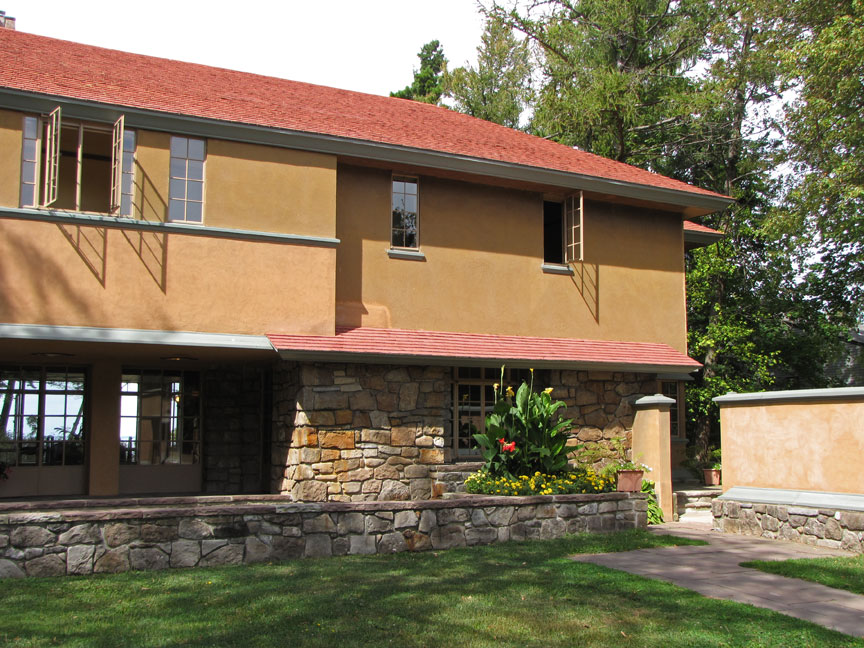
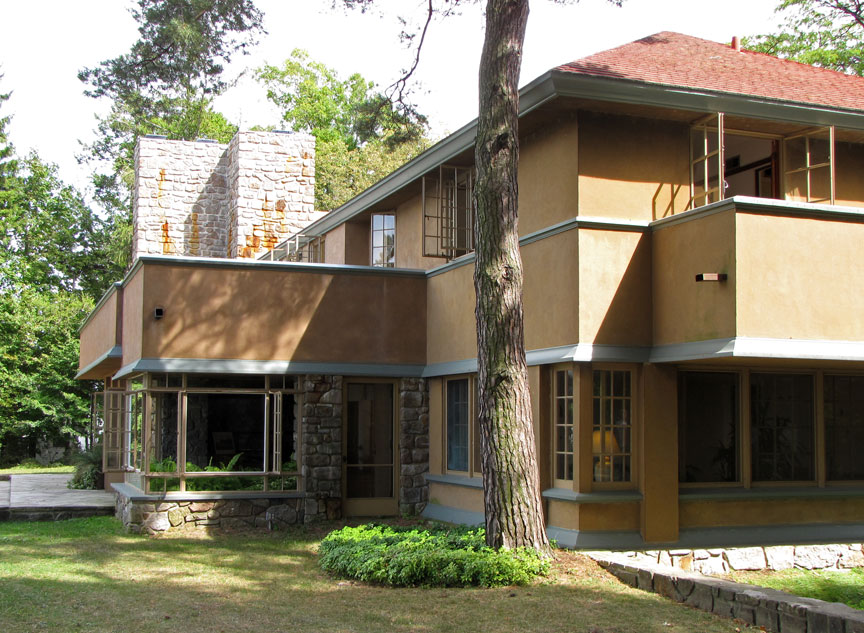
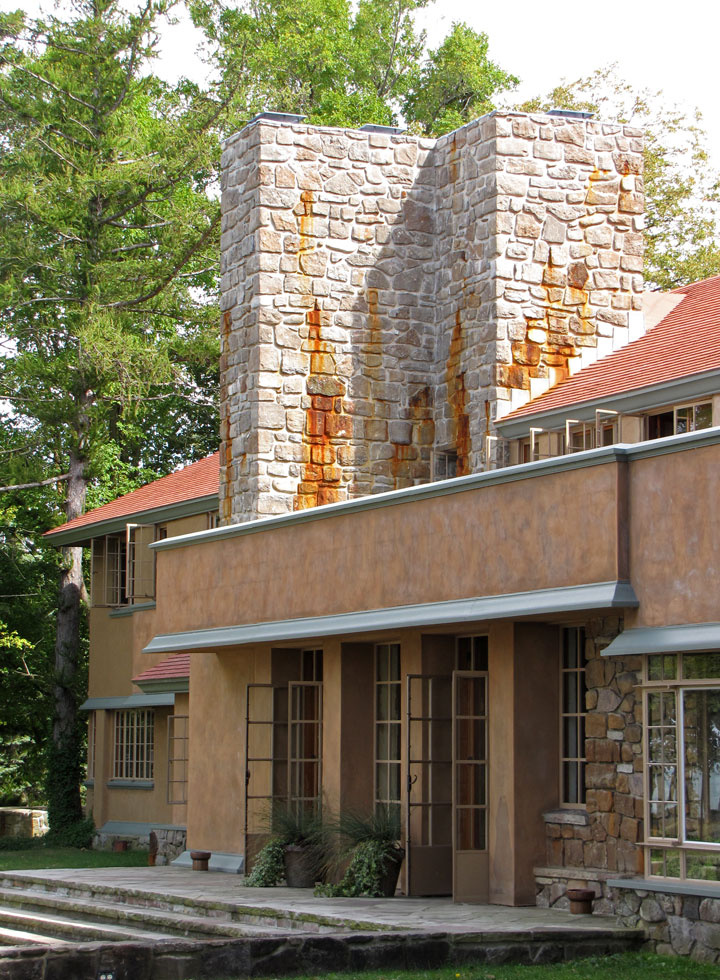
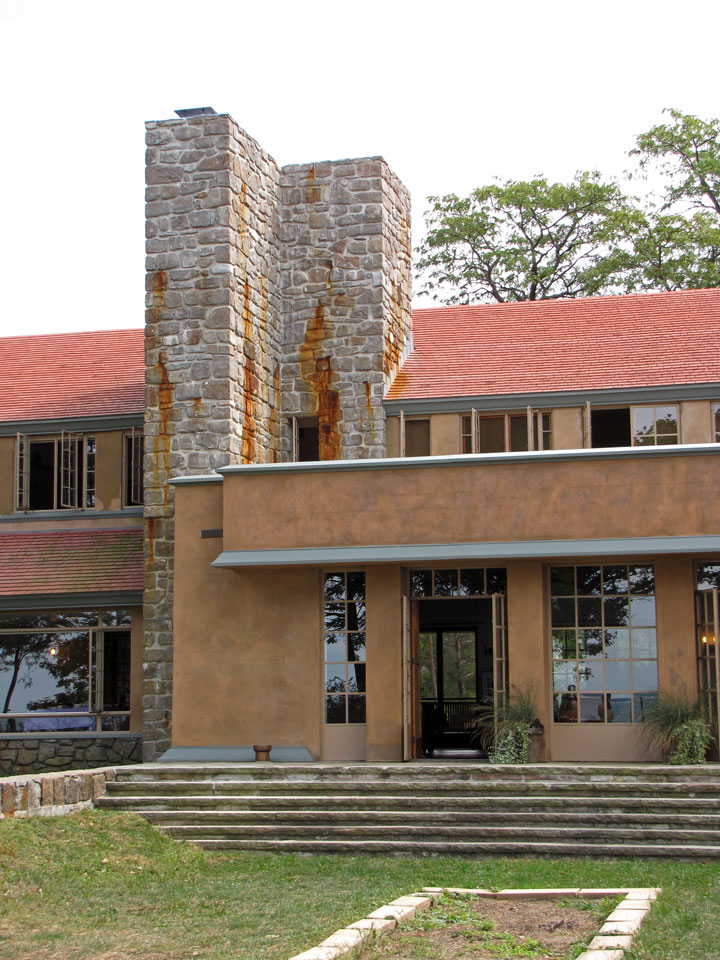
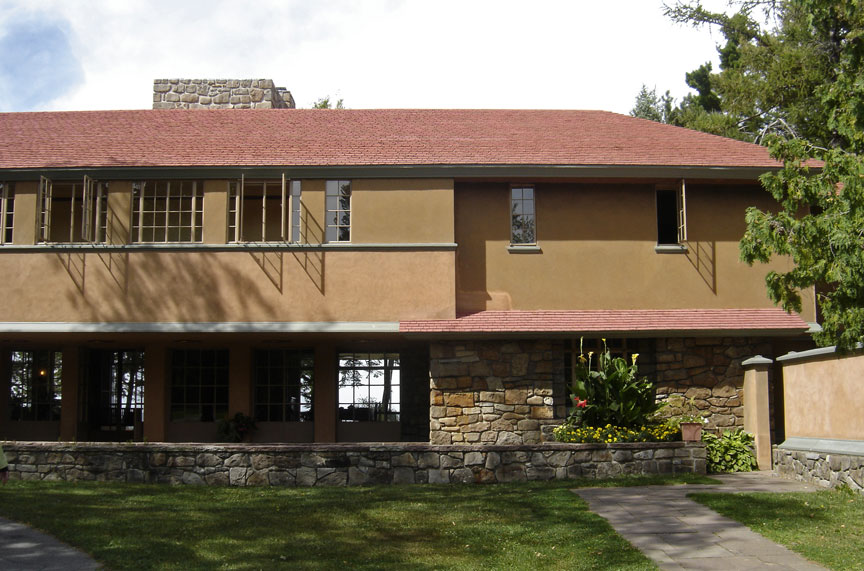
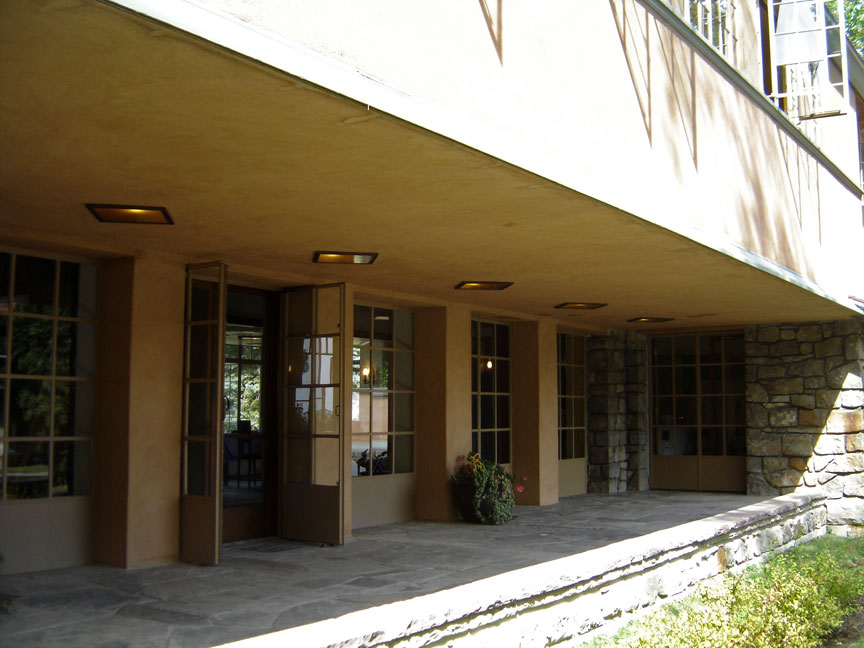
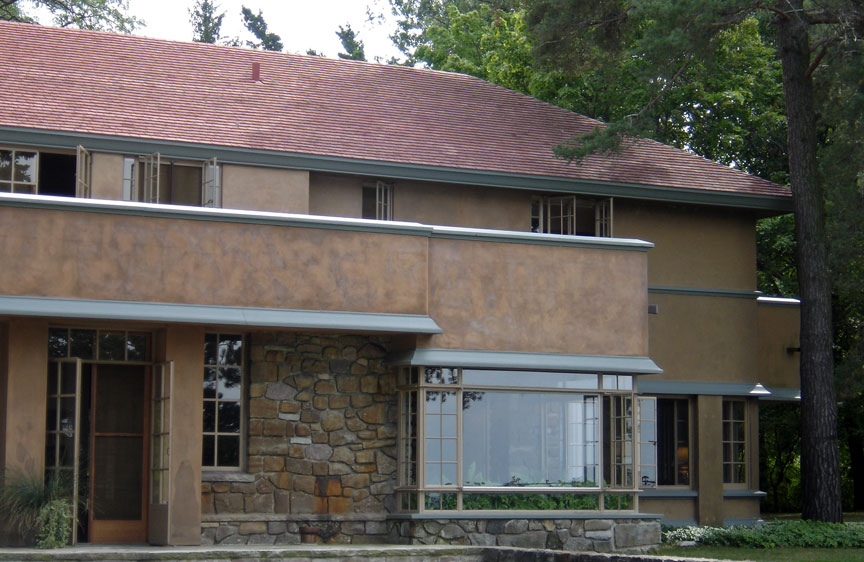
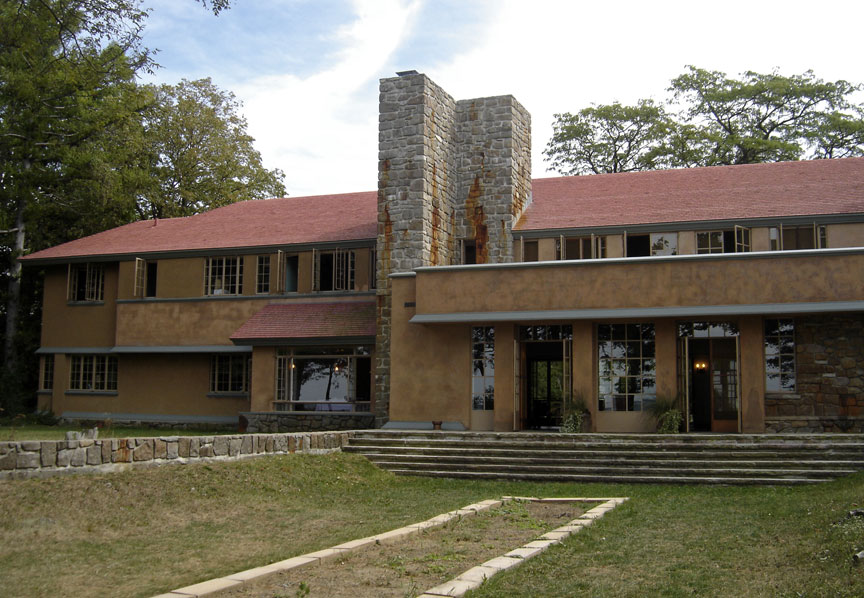
Interior
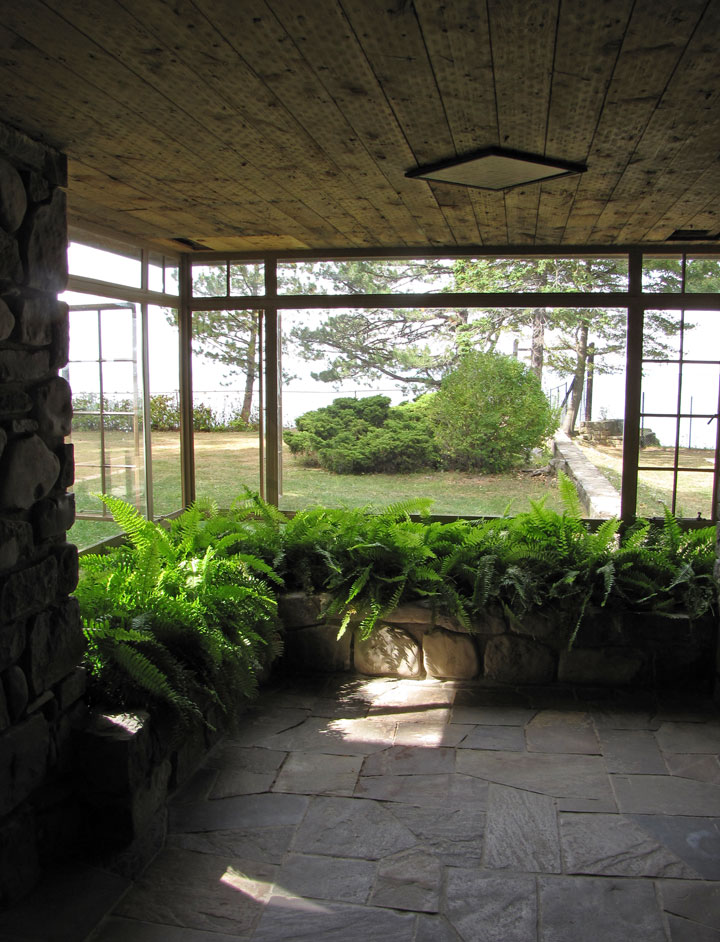
indoor patio
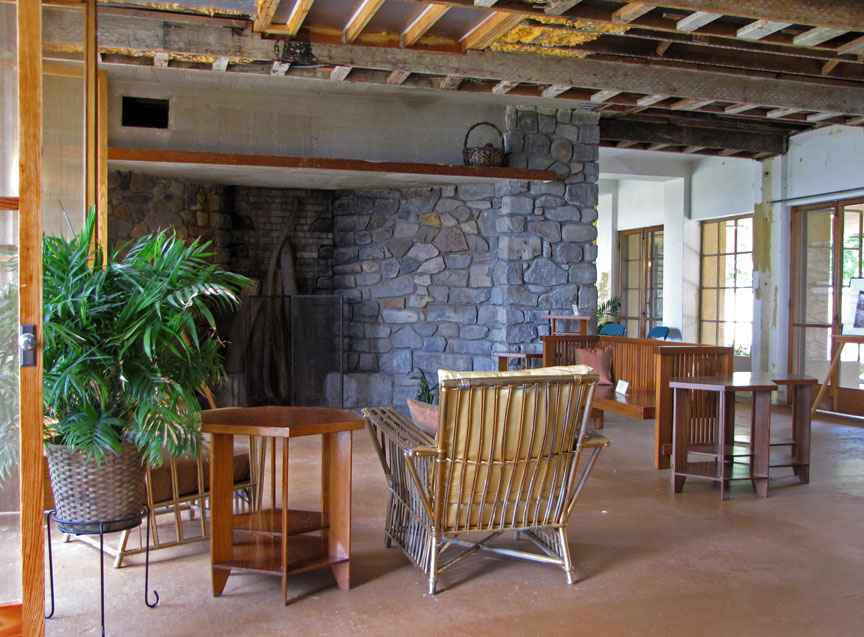
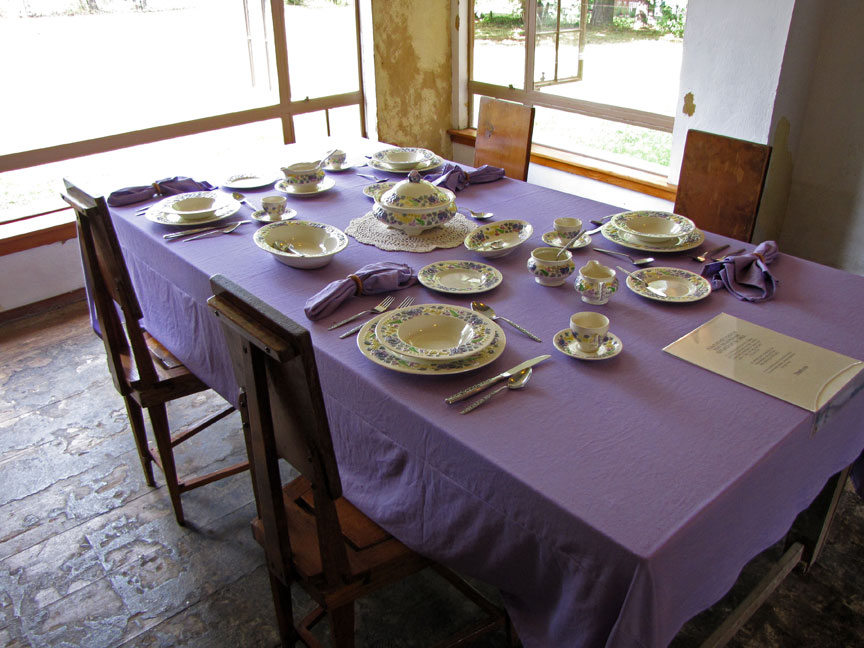
table with Martin service
Other structures on the grounds
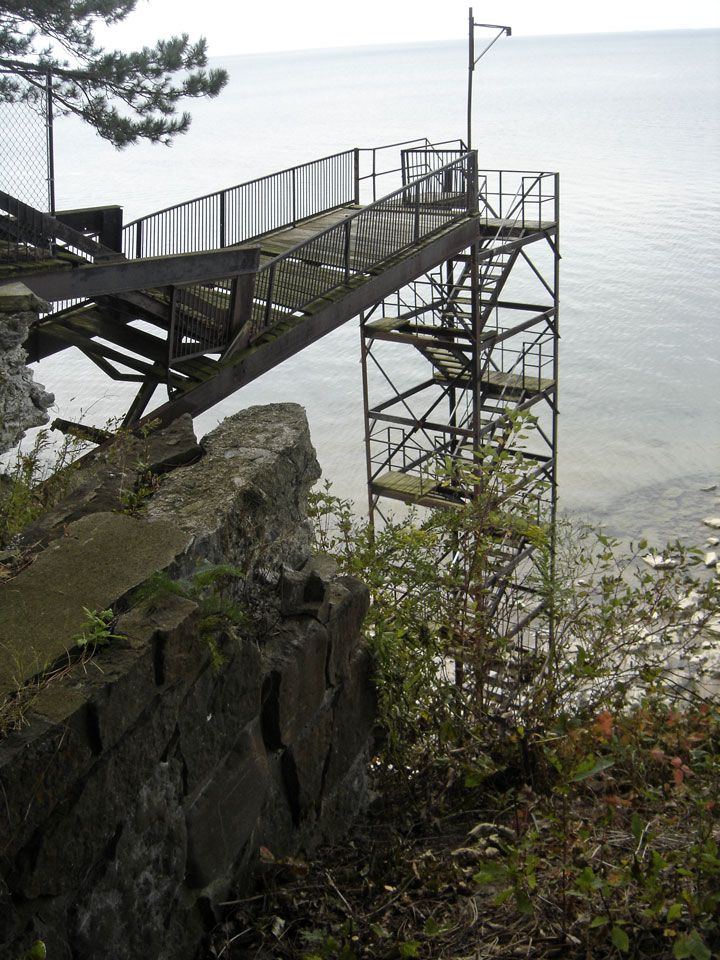
stairway to Lake Erie shore
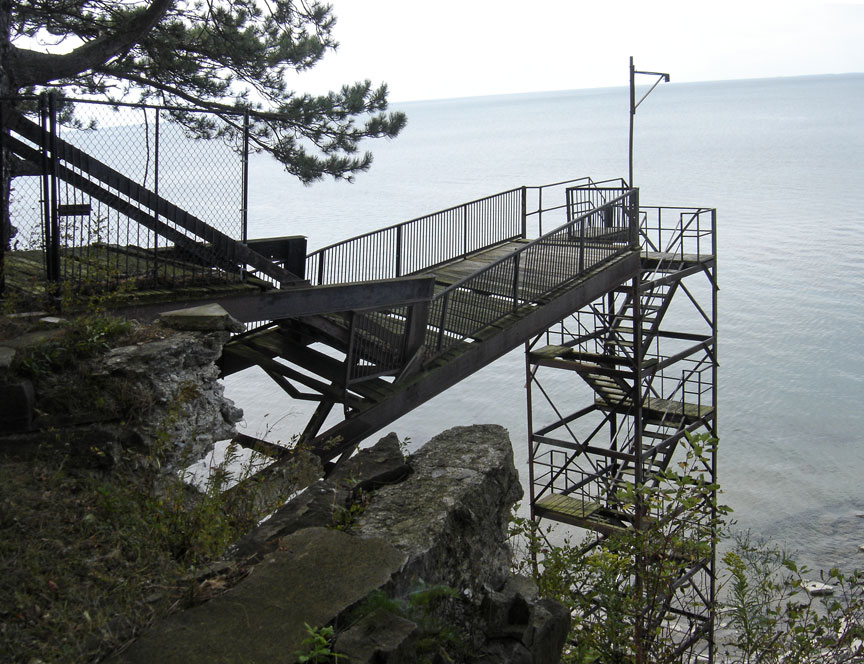
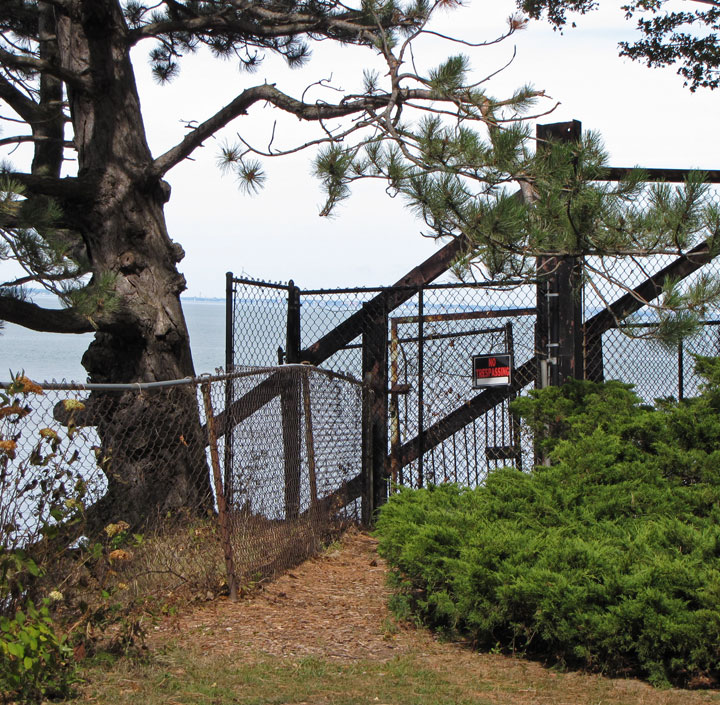
now closed

Heat Hut

where the building's heating equipment was housed
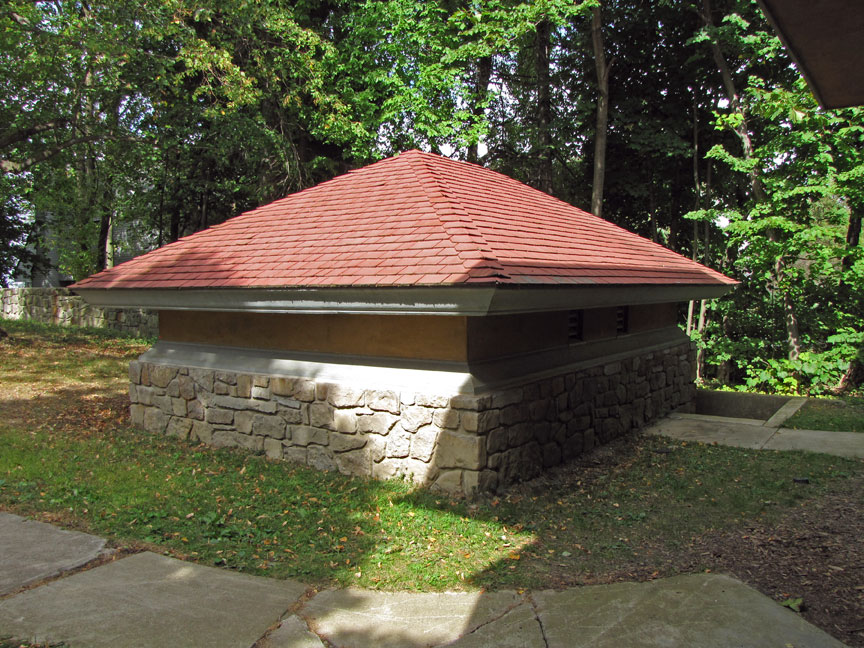
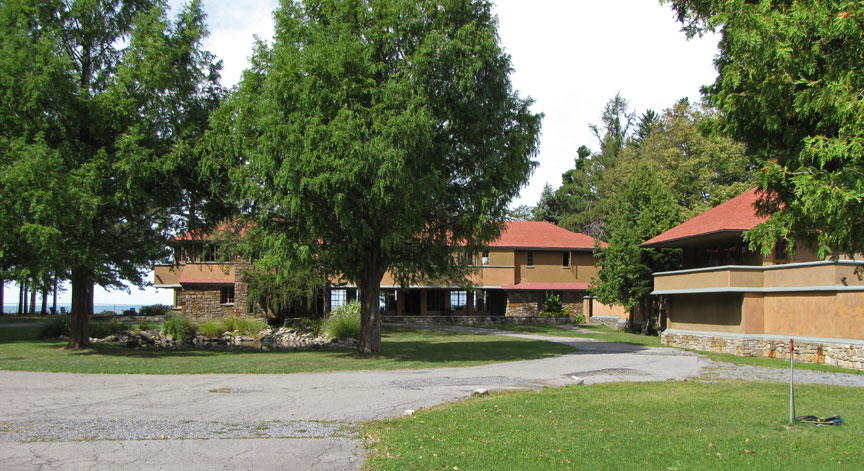
Foster House on the right
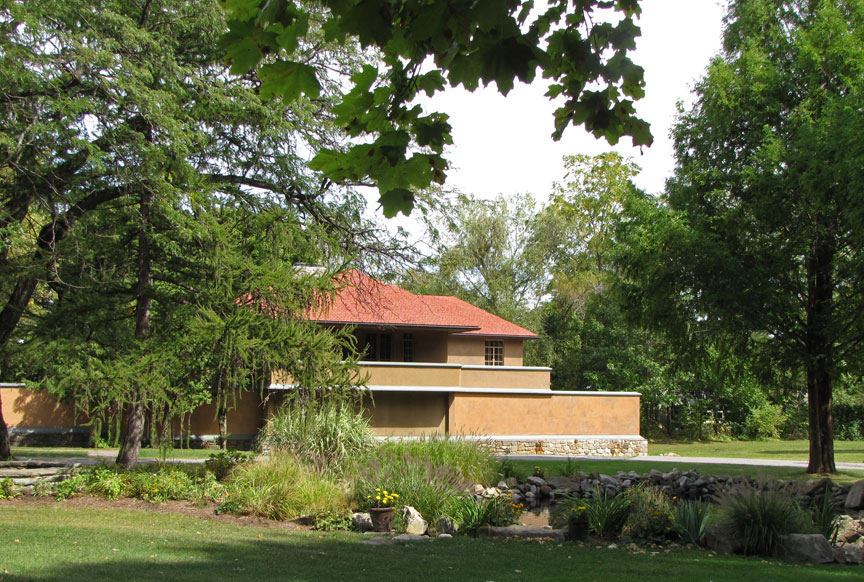
used for the chauffeur and his family
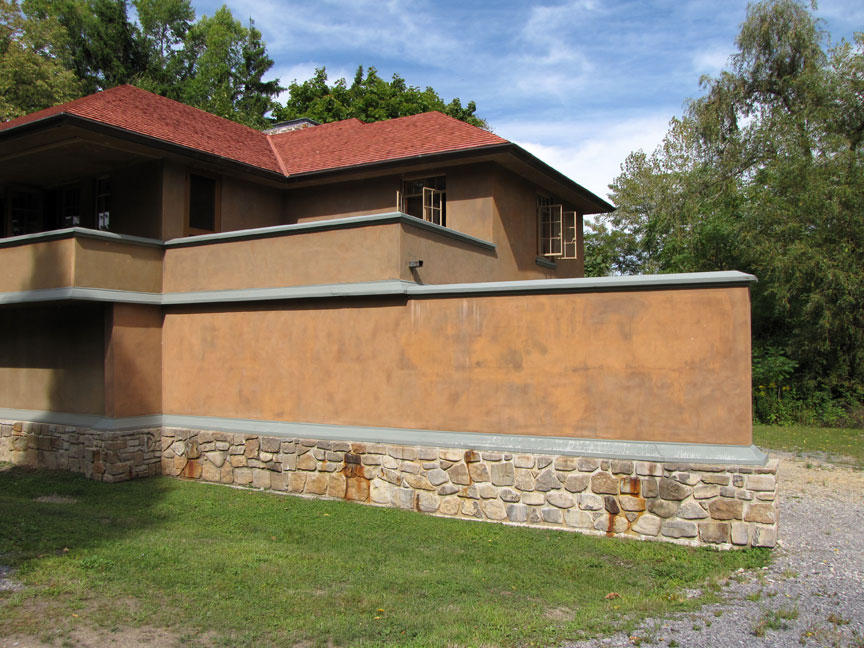
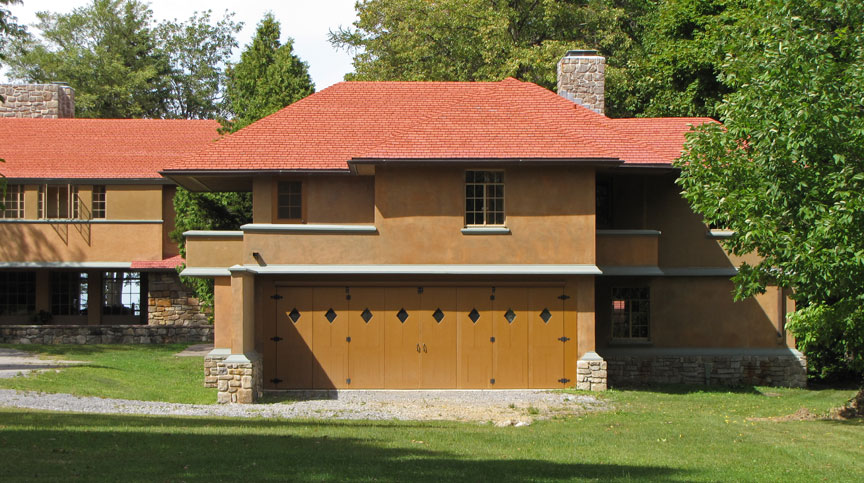
and the garage

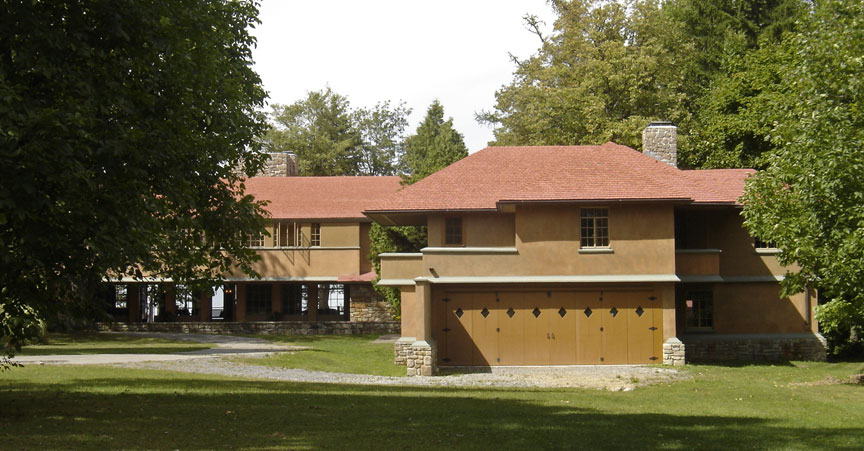
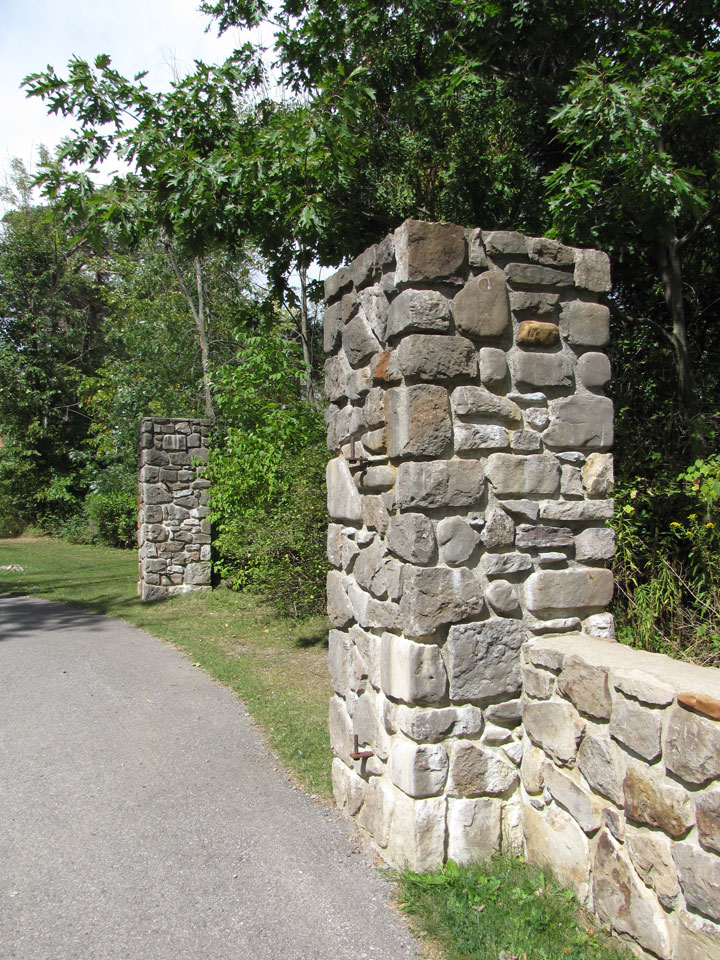
the original gates
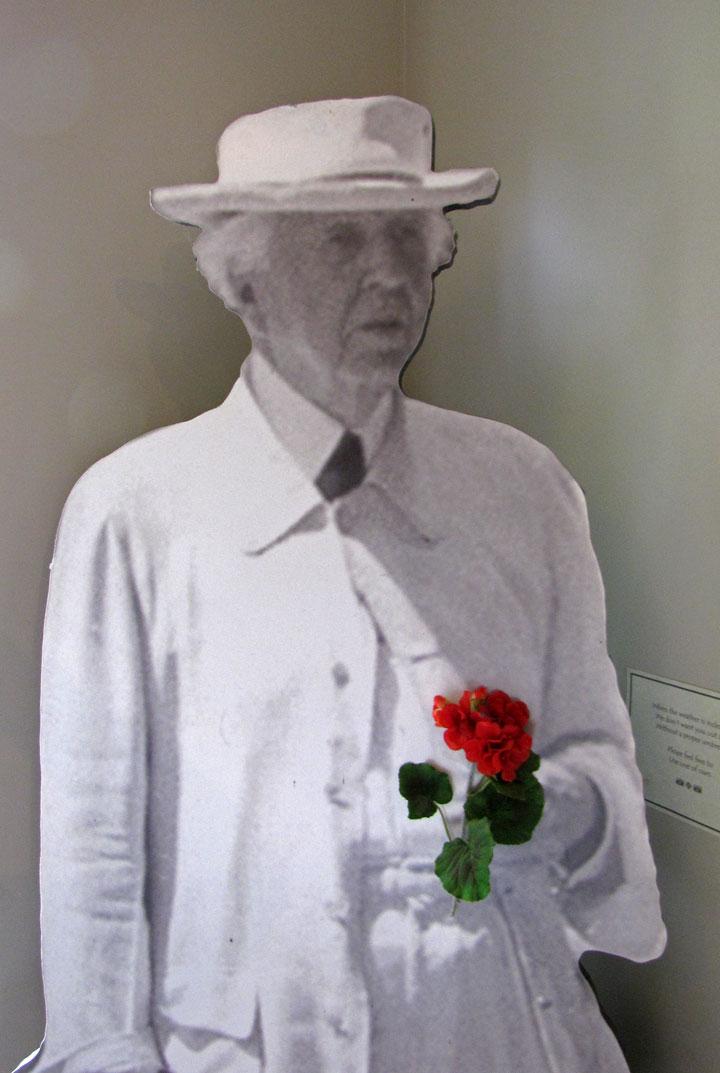
the Man
Frank Lloyd Wright